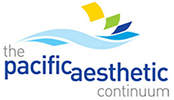
Dr. Thomas Dudney
Congenitally missing lateral incisors is a fairly common condition that may be either unilateral or bilateral and often presents restorative challenges. Some of the treatment options that exist for this clinical situation are: a removable appliance, space opening with bridges (conventional and winged, 3–unit and 2-unit cantilever), spaces opening with implant supported crowns at the appropriate age, and space closure with canine substitution. An interdisciplinary approach is key to arriving at the appropriate treatment plan with collaboration between the orthodontist, surgeon, and restorative dentist ideally beginning at an early age. Regardless of the restorative option selected there are both advantages and disadvantages that must be discussed and addressed prior to beginning treatment. A desirable treatment plan would be one that achieves the aesthetic and functional goals of the case while preserving as much healthy tooth structure as possible. The following case illustrates the treatment of a patient with congenitally missing lateral incisors who at an early age had been treated with canine substitution and composite bonding to simulate laterals and was now seeking a more aesthetic option.
The advantages of canine substitution in these types of cases is that it’s not necessary to prepare teeth for bridges (even conservative winged design) or maintain spaces and bone levels until the patient is old enough to have implant supported crowns placed. The disadvantage of canine substitution is that canines are darker and larger than laterals, they have a bulky canine eminence instead of a flat facial contour, and the gingival height is more apical than that of a lateral. Also the gingival height of the 1st premolar which must occupy the canine position is more coronal than the canine creating more gingival asymmetry. It should be noted that canine substitution could be contra-indicated in some cases and therefore winged bridges and implant supported crowns would be acceptable treatment options. The specific problems in this case that needed to be addressed included: gingival asymmetry, tooth proportions, excessive negative space, and a flat smile arc (Figure 1-4). Additionally she was unhappy with the color her teeth and wanted a whiter, brighter smile. The patient had inquired about and was interested in porcelain veneers and while an acceptable result could be achieved with veneers only, there would be some compromise to ideal gingival symmetry and tooth proportions. With that in mind and in order to achieve the most aesthetic result possible the agreed upon treatment plan called for orthodontic extrusion of the canines and intrusion of the premolars to correct the gingival asymmetry, narrowing of the canine width for better tooth proportions, and 10 porcelain veneers to decrease negative space, improve the flat smile arc, and to change the shape of the canines to laterals, the 1st premolars to canines, and the 1st molars to 2nd premolars. Furthermore the shade of the porcelain would give the patient the whiter, brighter smile she desired.

Figure 1

Figure 2

Figure 3

Figure 4
Before orthodontic treatment began the canines were reduced mesially, distally and facially to approximate the size of the laterals and to make it easier for the orthodontist to position them properly. Bracket placement allowed the orthodontist to extrude the canines and thus move the gingival margins in an coronal direction and intrude the premolars moving the gingival margins in an apical direction ( Figure 5-7 ). After the ortho was completed the patient was ready for veneer preparation. The mesial buccal cusp of the 1st molars and the 2nd premolars were prepared with a chamfer finish line and little or no facial reduction so the restorations could simulate a 2nd and 1st premolars respectively and could be built out facially to decrease negative space in the buccal corridors. The 1st pre-molars were prepared facially and lingually (removing the lingual cusp) so the restorations could simulate a canine and the canines (in the lateral position) having already been adjusted prior to ortho, were minimally prepared so the restoration would be the ideal size and shape of a lateral incisor. After impressions the provisional restorations were fabricated utilizing a putty matrix made from the diagnostic wax-up. Provisionals are critical to the success of the case because they allow the patient to preview the final result and offer feedback, they allow the dentist to evaluate aesthetics, function, and phonetics, and once approved by the patient they provide a blueprint for the laboratory to follow when fabricating the final restorations. In addition to pictures and an impression of the temporaries the following information was sent to the lab: material selection (in this case e.max Press lithium disilicate), shade of the prepared teeth, length of centrals, bite registration, stick bite, impressions, opposing model, and final shade (BL2/BL3). At the seat appointment the definitive restorations were tried in to evaluate fit and contacts and after isolation with a rubber dam all 10 were bonded in at the same time with a universal adhesive and light cure resin cement. After clean up the occlusion was checked and the restorations were polished.

Figure 5

Figure 6

Figure 7
The patient returned in one week for a post-op follow up appointment at which time she stated that she was very pleased with the appearance of her smile (Figure 8-10). This case illustrates the benefits of an interdisciplinary approach to treatment planning difficult cases and the importance of communication with the right dental laboratory in achieving the desired aesthetic results. Patient satisfaction would not have been possible without the efforts and talents of Gary Vaughn and the entire team at Corr Dental Designs.

Figure 8

Figure 9

Figure 10
If you have questions about my article or if you would like to send a case, please contact the Pacific Aesthetic Laboratory Group at www.pacificaestheticdentalstudio.com, Gary Vaughn, CDT, CTO (916) 786-6740, or via email [email protected].
